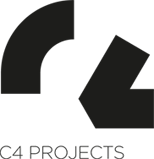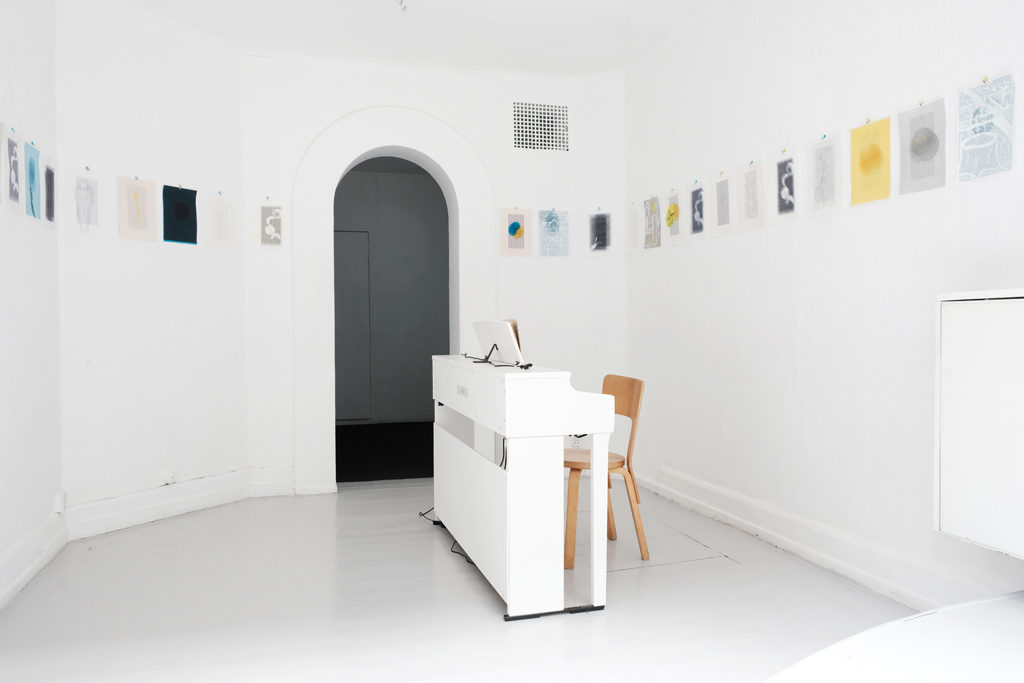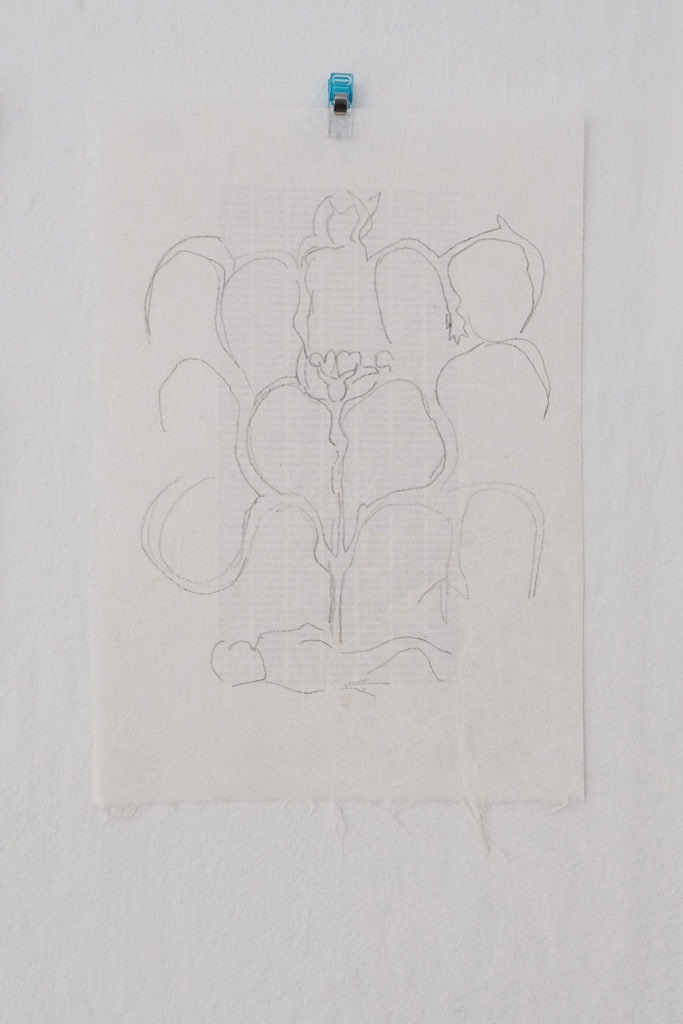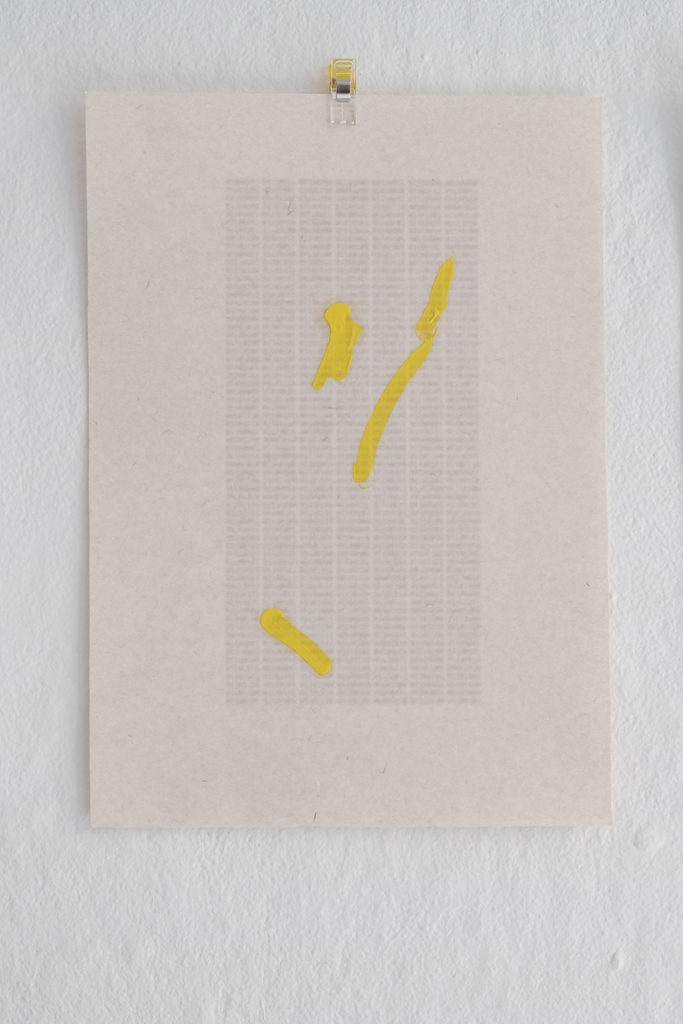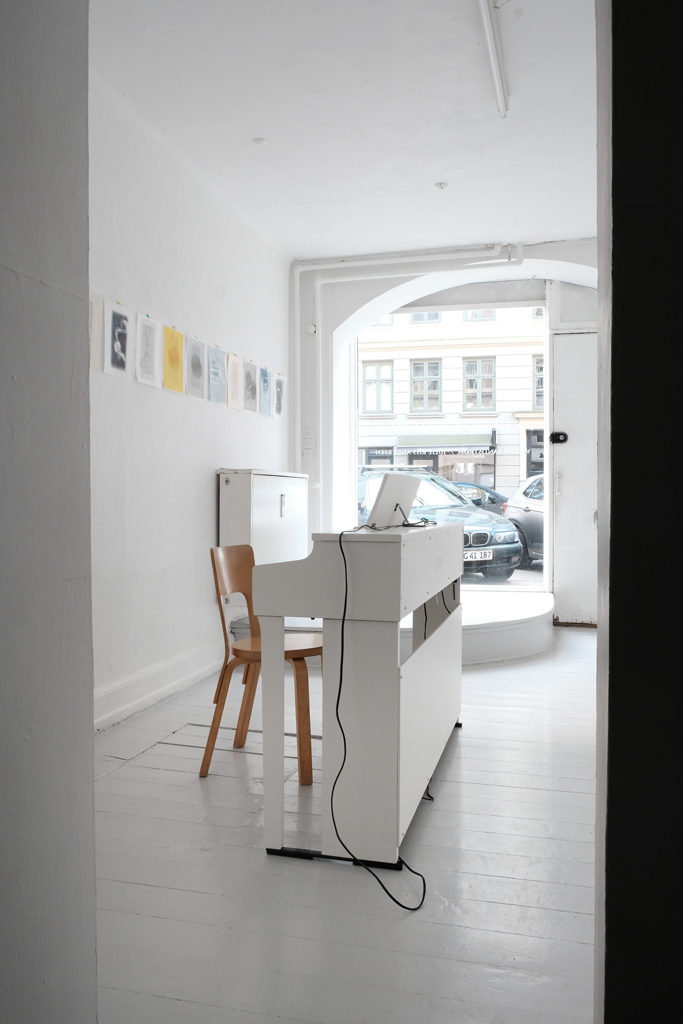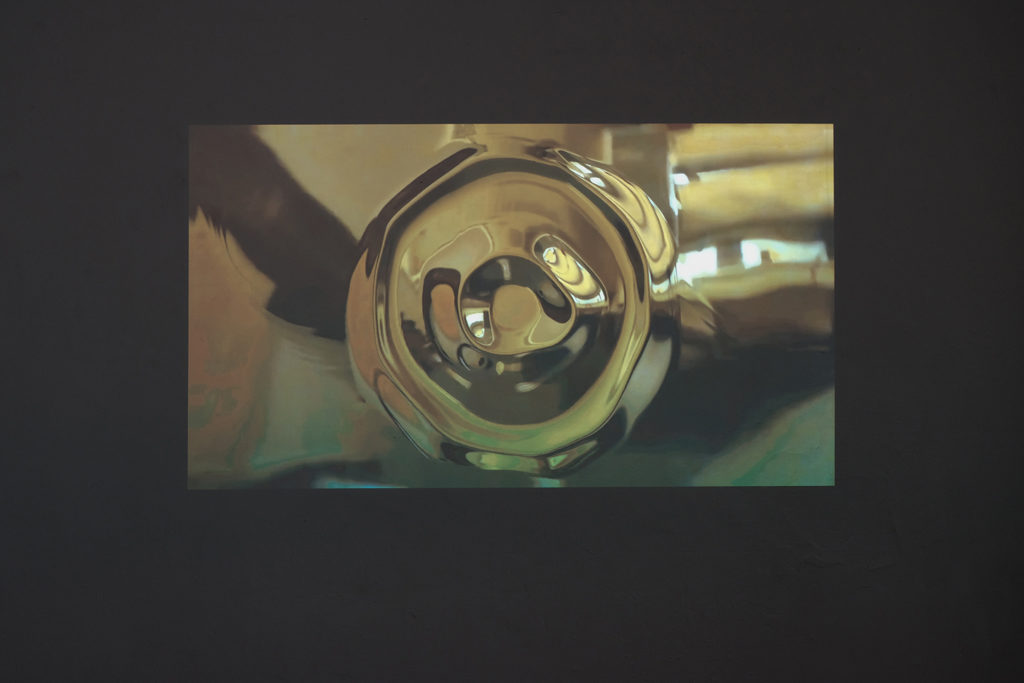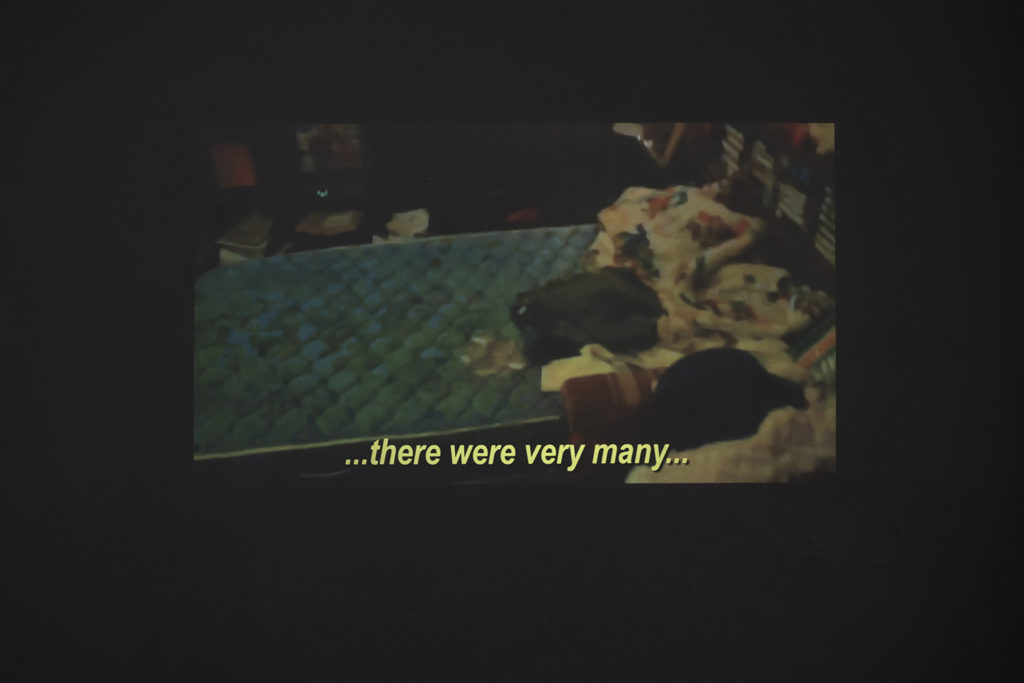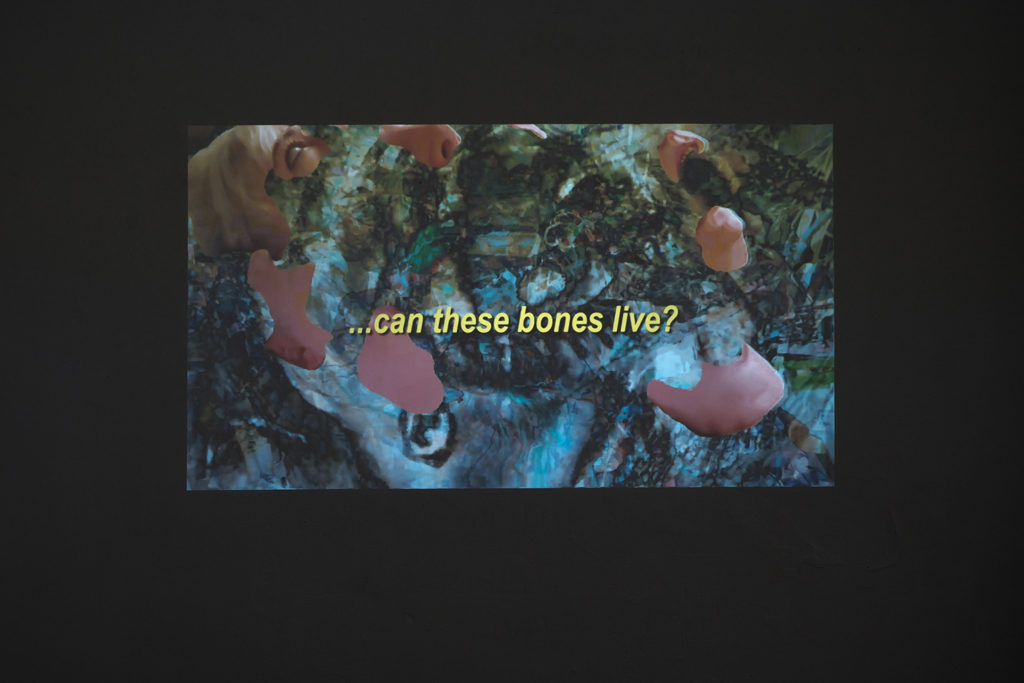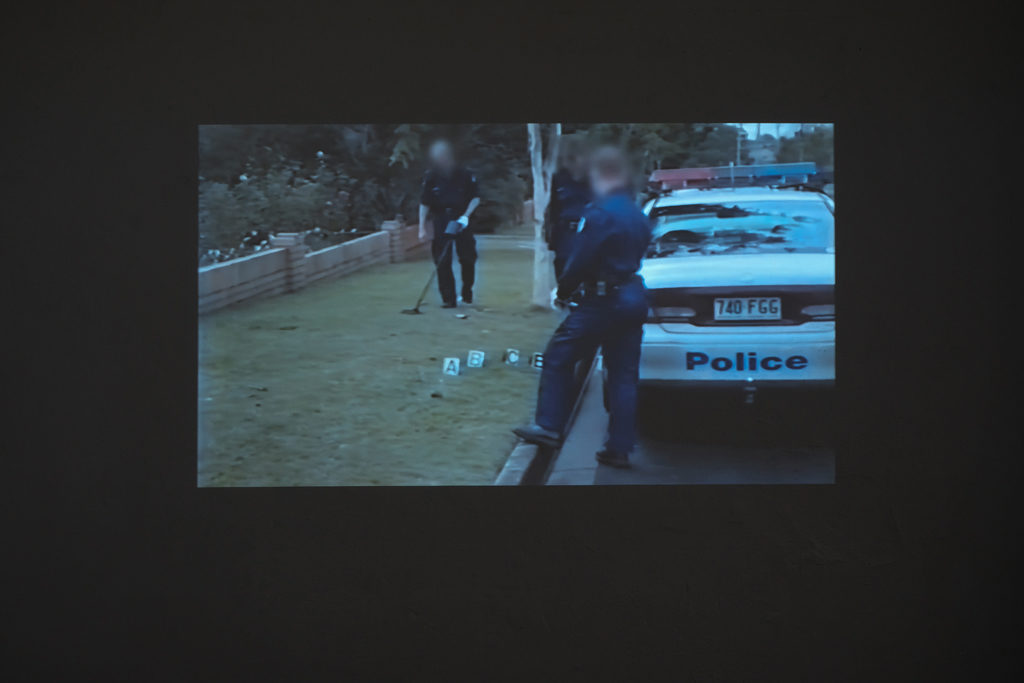Postsecular Reflections I
– Posthuman conditions
Viktor Landström // Julie Riis Andersen
Fernisering: Fredag 28. februar kl. 17-20
Udstillingsperiode: 29. februar – 28. marts 2020
Åbningstider: Torsdag, fredag og lørdag kl. 14-17
Postsecular Reflections I er den første af tre udstillinger, som omhandler troens betydning i samtiden. Duo-udstillingen med Viktor Landström og Julie Riis Andersen stiller spørgsmål ved forholdet mellem krop, magi og digitale systemer såvel som adskillelsen af ånd og materie.
Viktor Landström skaber sine film ved hjælp af en collageteknik, hvor egne animationer blandes med fundne tekster, billeder og video fra internettet til nye fortællinger. Udgangspunktet for filmen “Can These Bones Live?” er en fortælling fra Det Gamle Testamente, som kaldes “The Valley of Dry Bones” på engelsk. Fortællingen beskriver, hvordan profeten Ezekiel i en åbenbaring bliver ført ud i en dal fuld af indtørrede knogler. Gud opfordrer Ezekiel til at genoplive de gamle knogler ved at tale til dem. Den associative film forgrenes i flere parallelle historier. Bibelfortællingen bliver knyttet til andre projekter, hvor noget rekonstrueres: en arkæologisk udgravning, en efterforskning af et gerningssted, en knæoperation og sanering af en lejlighed. “Can These Bones Live?” er en helt ny og længere version af Viktor Landströms film med samme titel fra 2018.
I Julie Riis Andersens grafiske installation og performance møder salmen ’Est is ein Ros entsprungen’ (på dansk ‘En Rose så jeg skyde’) kvantecomputerens ikke-binære tilgang til information. Salmen er en af de ældste i salmebogen og har et profetisk tema, med reference til Esajas forudsigelser i Det Gamle Testamente. Den er en gammel Mariavise, kommet til den katolske kirkes liturgi gennem folkesangkulturen og har sidenhen gennemgået flere genskrivninger og nyfortolkninger. Kvantecomputeren opererer i en skala på atomniveau, hvor andre naturlove er gældende. Den læser binær information i et spektrum frem for de to endegyldige positioner 1 og 0. Derfor er den ekstremt meget hurtigere end almindelige computere, men grundet de betingelser den skal operere under, er den meget skrøbelig og laver mange fejl. Den er et eksempel på, hvordan teknologien bliver mere biologisk og menneskelig.
Udstillingsrækken Postsecular Reflections er kurateret af Luise Sejersen og reflekterer over adskillelsen af kunstens, videnskabens og religionens rum i dag. Som Jürgen Habermas skrev tilbage i 2008, så ændrer præmisserne for det sekulære samfund sig. Moderniseringen har ikke ført til mindre dyrkelse af religion og metafysiske verdensbilleder. På trods af den store interesse for spiritualitet i dansk samtidskunst er en almindelig holdning siden Det Moderne Gennembrud stadig, at religion er noget vi frigør os fra. Udstillingsrækken opfordrer til at undersøge og nuancere troens verden i kunstens rum.
Viktor Landström bor og arbejder i Stockholm. Hans værker drejer sig om identitetsdannelse i den digitale tidsalder. Han har en BFA i Grafisk Design fra Konstfack og en MFA fra Malmö Art Academy i 2017. Hjemmeside: www.viktorlandstrom.se
Julie Riis Andersen bor og arbejder i København. Hun arbejder med print, lyd, tekst, stedsspecifikke projekter og interdisciplinær research. Hun er uddannet fra Det Kongelige Danske Kunstakademi i 2015. Hjemmeside: www.julieriisandersen.dk
Udstillingerne er en del af c4 projects Intimitetsprogram 2019-20 og er støttet af Statens Kunstfond, Det Obelske Familiefond, Beckett Fonden samt Københavns Kommunes Råd for Visuel Kunst.
////////////////////////////////////////////////////////////////////////////////////////////////////////////////////////////////////////
English:
THE EXHIBITION IS CLOSED DUE TO CORONA VIRUS
Postsecular Reflections I
– posthuman conditions
Viktor Landström // Julie Riis Andersen
Opening: Friday February 28th 5-8 pm
Exhibition period: February 29th – March 28th
Opening hours: Thursday, Friday and Saturday 2-5 pm
Postsecular Reflections I is the first of three exhibitions that deals with the importance of faith in contemporary times. The first exhibition questions the relationship between the body, magic and digital systems as well as the separation of spirit and matter.
Viktor Landström creates his film using a collage technique where texts, images and video clips found on the Internet, together with his own animations, are cut up and rearranged into new narratives. The starting point for the film “Can These Bones Live?” is the story ”The Valley of Dry Bones” from the Old Testament. The story describes how the prophet Ezekiel is led into a valley full of dried bones during a revelation. God calls Ezekiel to revive the dead bones by speaking to them. The associative film is branched into several parallel stories. The Bible story is linked to other projects where reconstruction is taking place: an archaeological excavation, an investigation of a crime scene, a knee operation and the cleaning of an apartment. “Can These Bones Live?” is a new and longer version of Viktor Landströms film with the same title from 2018.
In Julie Riis Andersen’s graphic installation and performance, the hymn ‘Est is ein Ros entsprungen’ (Lo, how a Rose e’er blooming) meets the quantum computer’s non-binary approach to information. The hymn is one of the oldest in the hymnbook and has a prophetic theme. It was originally a Marian hymn, delivered orally through the folk song culture. Julie Riis Andersen is interested in coding, which has a creative, shaping force in the digital world as language may have in the physical world. The quantum computer operates on a scale at atomic level, where other laws of nature apply. It works much faster than regular computers but is still today very fragile and makes a lot of mistakes. It is an example of how technology is becoming more biological and human-like.
The exhibition series Postsecular Reflections is curated by Luise Sejersen and reflects on the state of secularism today. As Jürgen Habermas wrote back in 2008, the premises of secular society are changing. Modernization has not led to less worship of religion and metaphysical worldviews. Despite the great interest in spirituality in contemporary art, a common attitude still remains that religion is something we free ourselves from. This exhibition series encourages exploring and nuancing the world of faith in the space of art. It is part of the c4 projects Intimacy Program 2019-20 and is supported by The Danish Arts Foundation, The Obel Family Foundation, The Beckett Foundation and The Copenhagen Municipality’s Visual Arts Council.
Viktor Landström lives and works in Stockholm. His work revolves around identity formation in the digital age. He holds a BFA in graphic design from Konstfack in Stockholm and an MFA in fine arts from Malmö Art Academy 2017. Website: www.viktorlandstrom.se
Julie Riis Andersen lives and works in Copenhagen. She works with print, sound, text, site-specific projects and interdisciplinary research. She graduated from the Royal Danish Academy of Fine Arts in 2015. Website: www.julieriisandersen.dk
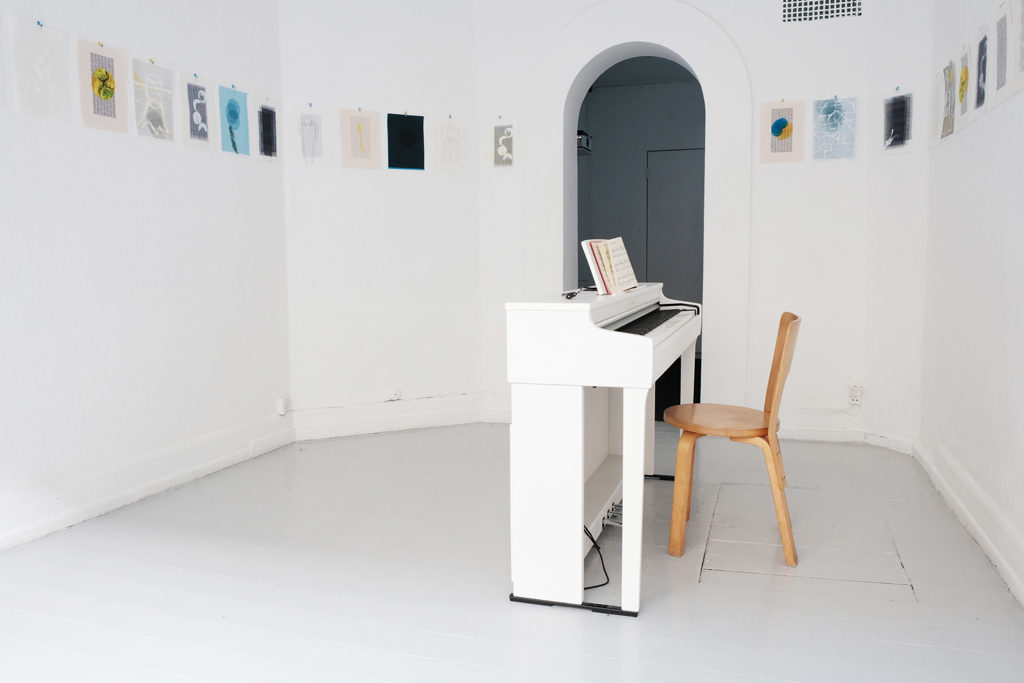
Julie Riis Andersen: “A hymn in superposition” 2020 (installation view). Foto: Camilla Reyman
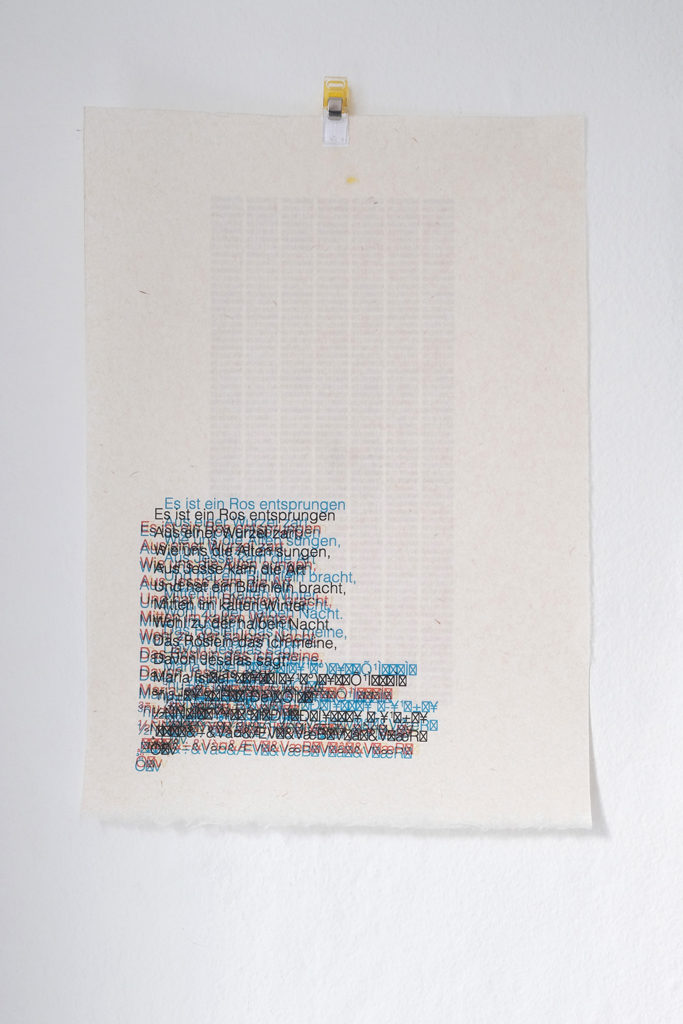
Julie Riis Andersen: “A hymn in superposition” 2020 (detalje). Foto: Camilla Reyman
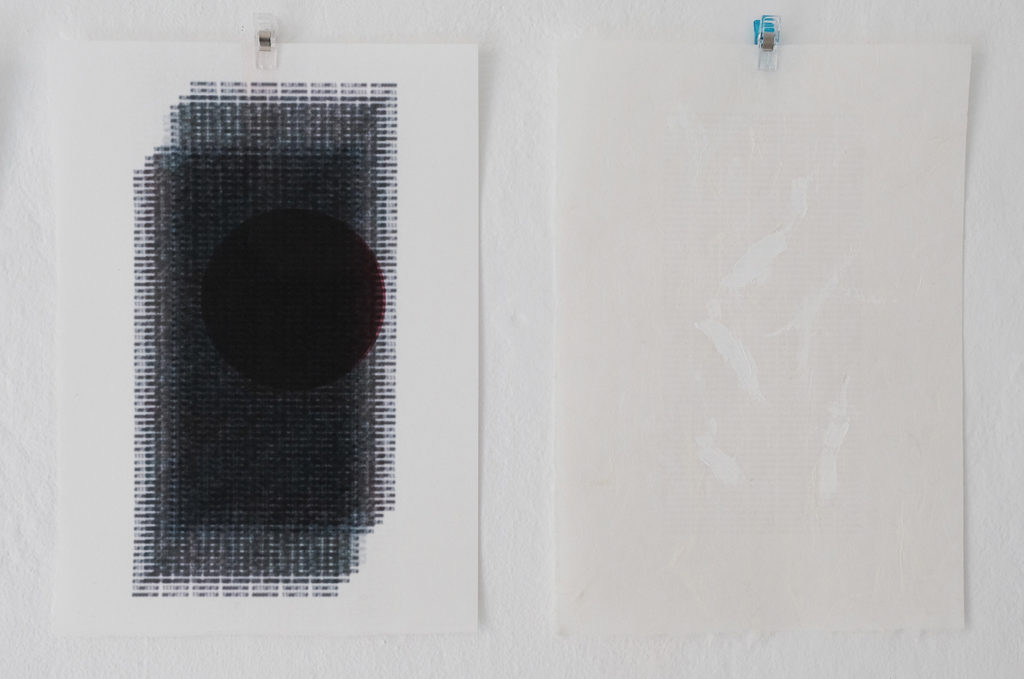
Julie Riis Andersen: “A hymn in superposition” 2020 (installation view). Foto: Camilla Reyman
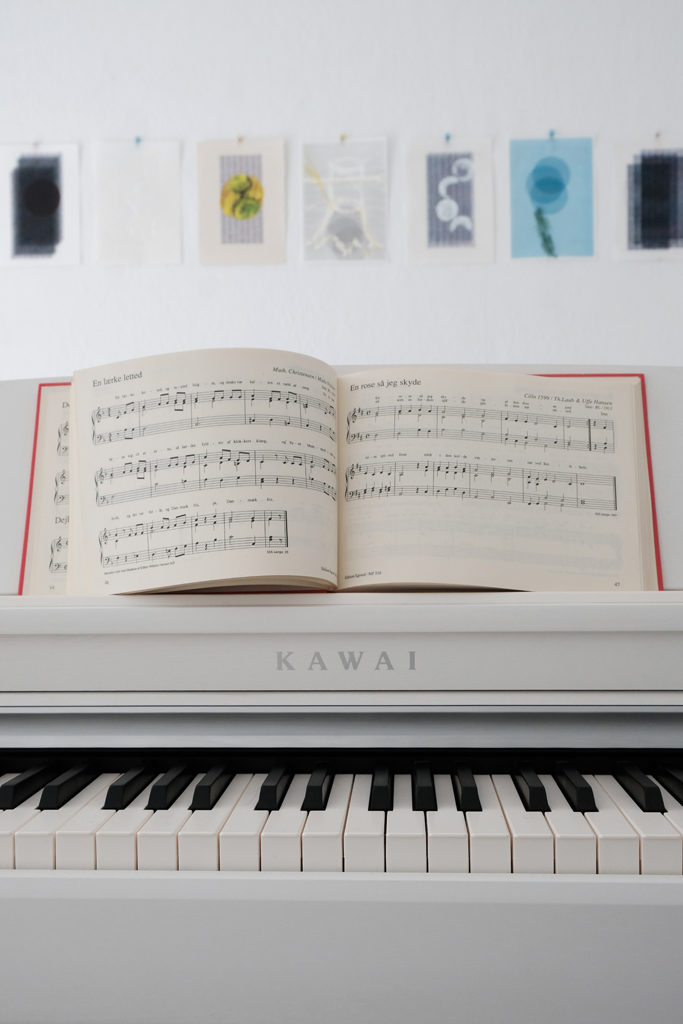
Julie Riis Andersen: “A hymn in superposition” 2020 (installation view). Foto: Camilla Reyman
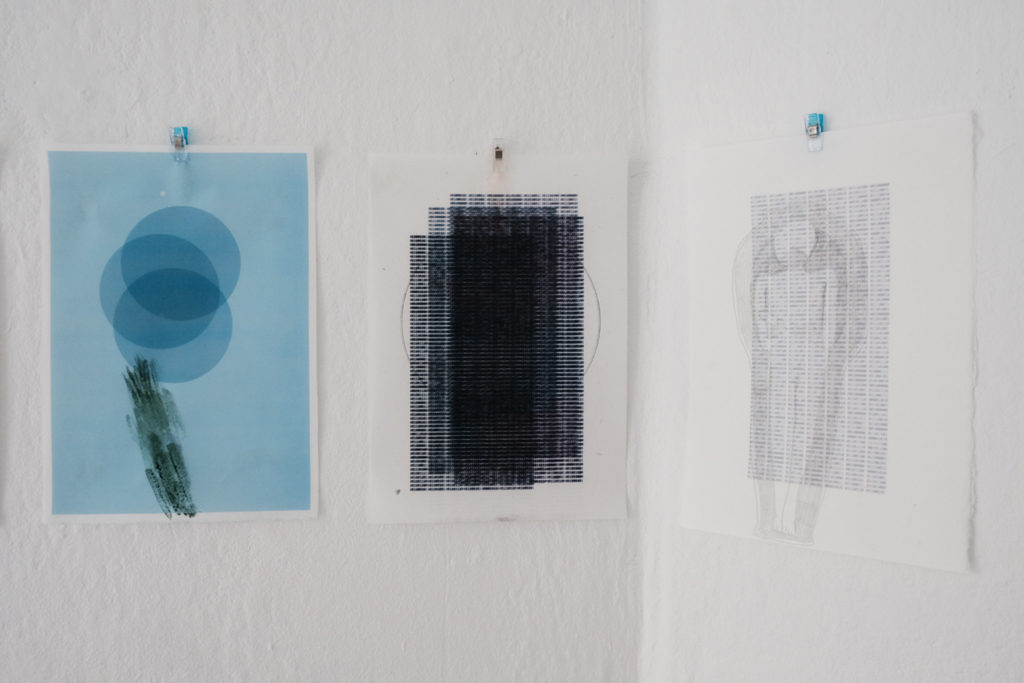
Julie Riis Andersen: “A hymn in superposition” 2020 (installation view). Foto: Camilla Reyman
Julie Riis Andersen: “A hymn in superposition” 2020. Foto: Camilla Reyman
Julie Riis Andersen: “A hymn in superposition” 2020. Foto: Camilla Reyman
Julie Riis Andersen: “A hymn in superposition” 2020 (installation view). Foto: Camilla Reyman
Viktor Landström: “Can these bones live? 2020 (film 37 min). Foto: Camilla Reyman
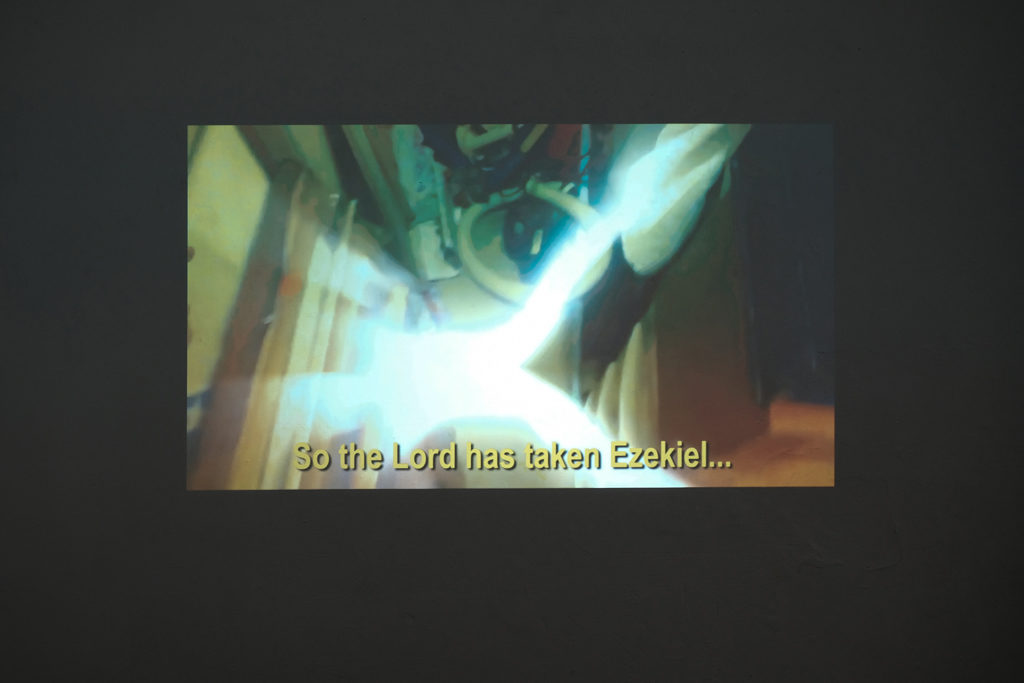
Viktor Landström: “Can these bones live? 2020 (film 37 min). Foto: Camilla Reyman
Viktor Landström: “Can these bones live? 2020 (film 37 min). Foto: Camilla Reyman
Viktor Landström: “Can these bones live? 2020 (film 37 min). Foto: Camilla Reyman
Viktor Landström: “Can these bones live? 2020 (film 37 min). Foto: Camilla Reyman
Link to “Can these bones live? on Viktor Landströms website: http://viktorlandstrom.se/
